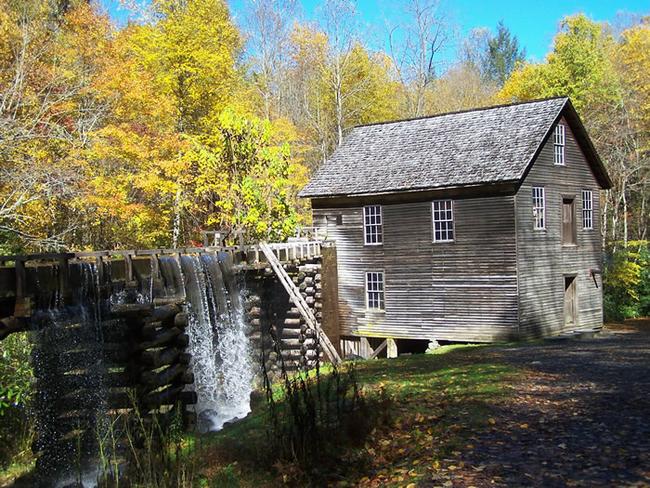
Mingus Mill
Swain Co. | North Carolina | USA
Watersource: Mingus Creek.
Mingus Mill
Go north from Cherokee, N.C. on US 441/Newfound Gap Road for about 4 miles, past Oconaluftee Visiter Center and the Mountain Farm Museum, to the mill at Mingus Creek near the confluence with the Oconaluftee River.

The mill, built mostly of yellow poplar/tuliptree, shows excellence in workmanship, with vertical post and many support beams chamfered to 45 degrees so there are no sharp edges. The mill also employs Dutch doors; light and air are allowed in with the upper door open, but unwanted pets and youngsters are kept out by keeping the bottom door closed, cats and rats being the exception. The first are needed when the second are present.
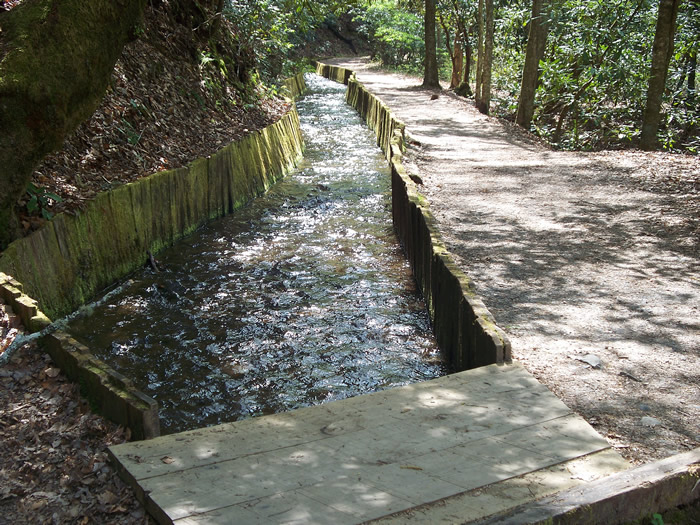
The flume or sluice is fed from behind and further up the hill by a boxed-in millrace running slightly downhill from horizontal, bringing the water of Mingus Creek from further upsteam to the mill.
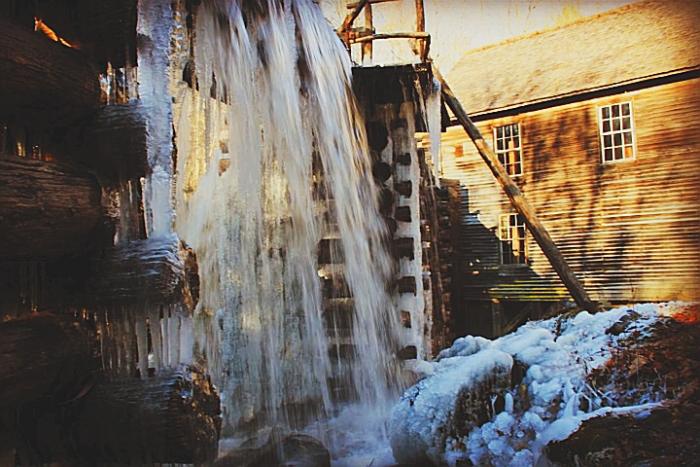
A beautiful,frozen shot of Mingus Mill / February 14, 2014
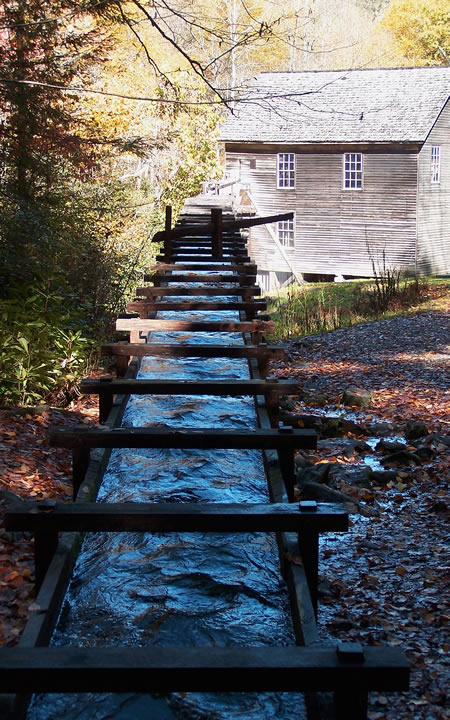
The boxed in millrace gives way to the elevated sluice box, several hundred feet from the mill. There is no dam or millpond to feed the mill. All the water comes from current surface and spring flow.
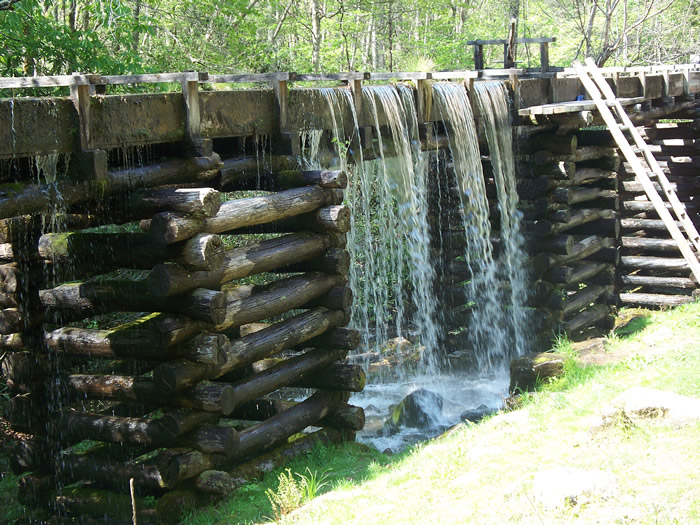
At the top of the ladder is a spill-gate that can be operated by a lever to control the water flow into the turbine's penstock (22-foot vertical wooden tank), then into a 2 foot diameter cast iron pipe to allow appropriate amount and flow to power the turbine.
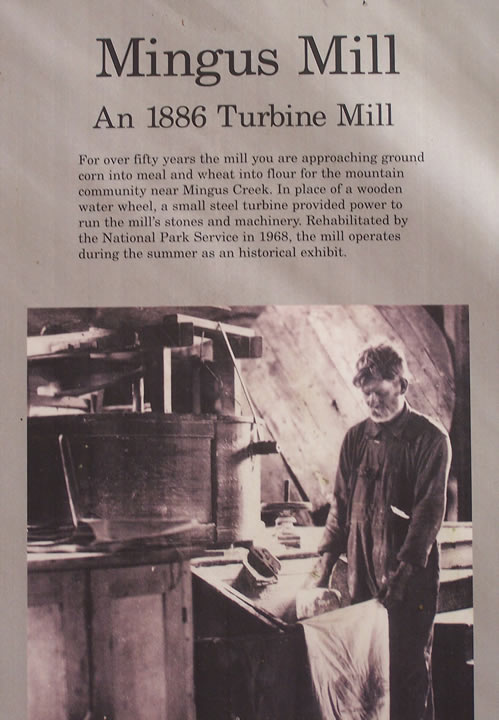
The first mill on Mingus Creek was built c. 1800 by the Mingus family, who had moved to the Oconaluftee Valley in the 1790's. This mill was powered by an overshot waterwheel. This old mill was replaced in 1886, when Dr. John Mingus contracted with Sion T. Early to build the present mill. Early was paid $600 for his work. The photo is of John Jones, who operated the mill under a lease from the National Park Service in the 1930's, at work grinding cornmeal.
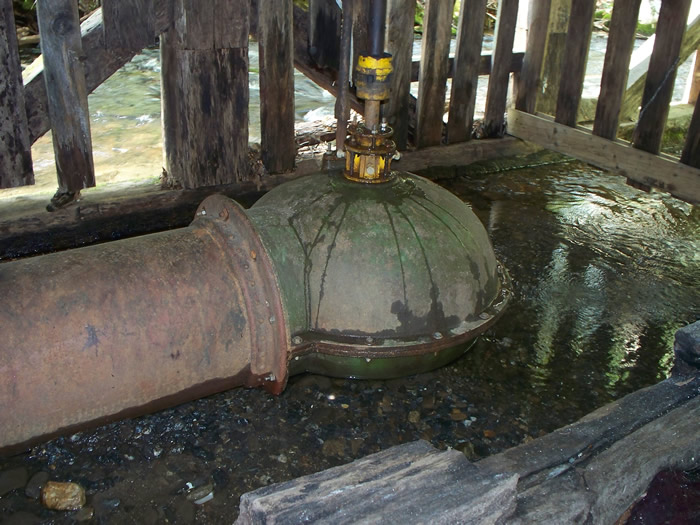
The current mill operates using a turbine manufactured by the James Leffel Co. of Springfield, Ohio. The turbine allows water to pass through the vanes, which are adjustable to allow more water or less through, thus turning the connected vertical shaft faster or slower.
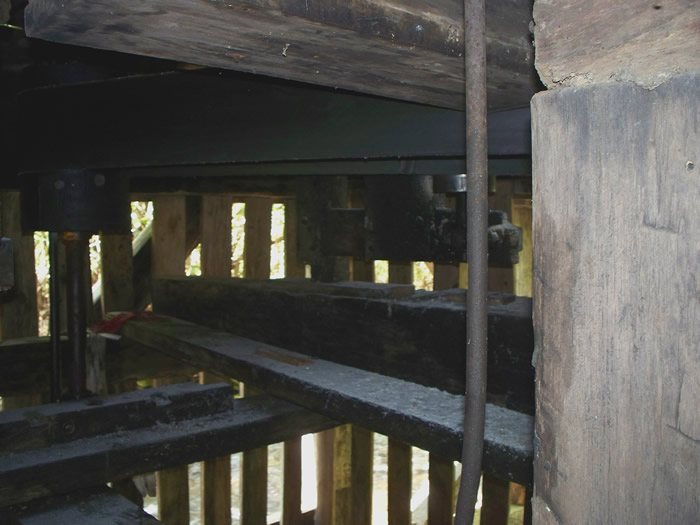
The belt shown is driven off the turbine shaft to power the rest of the mill. Other levers within the mill can engage or disengage portions of the powered equipment independently of each other as so desired.
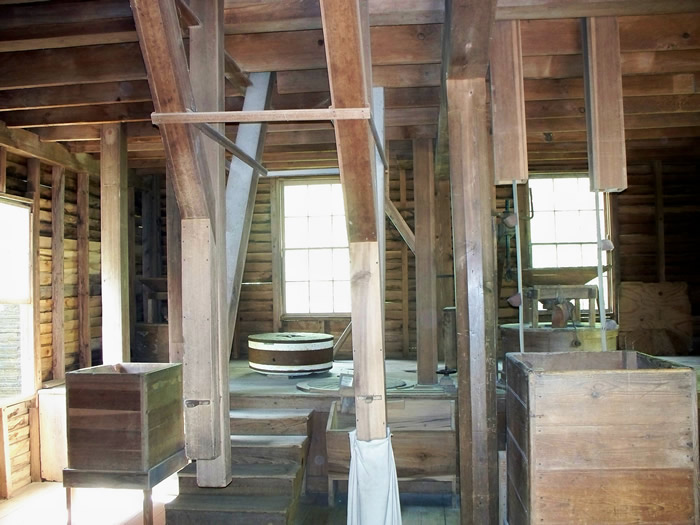
An overall view of the platform that forms the area for the grinding stone sets. The support under this platform is very solidly built to hold the tremendous weight of the millstones. Each one may weigh a thousand pounds or more. Some early, wooden frame structures built for holding and absorbing the shock and vibrations caused by the turning stones were called "horst frames".
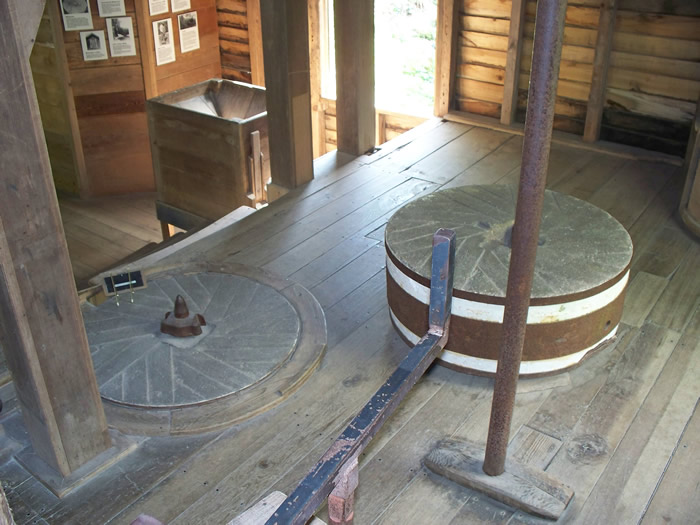
An actual photo that shows the stones that grind grain for flour. The upper stone has been lifted off to expose the bottom or nether stone. Mingus descendents, the Floyd family, owned and operated the mill into ca. 1930, when it was acquired by the National Park Service.
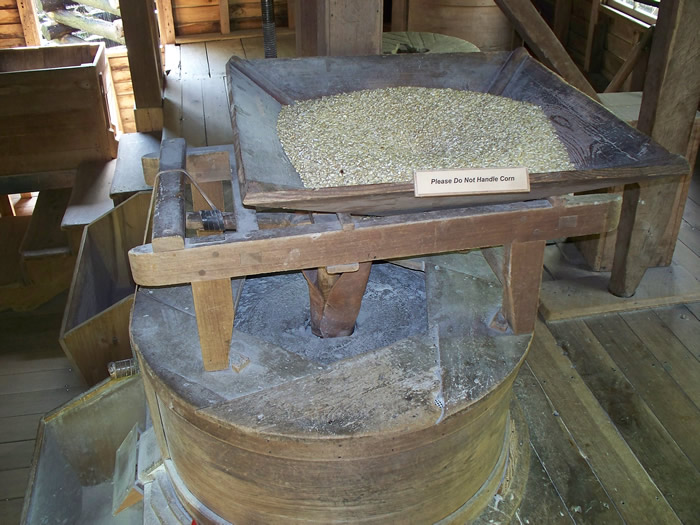
This photo shows a smaller set of stones used to grind meal from corn kernels. Corrections offered for the webpage on 10/16/2019 by Tom Powers, a NPS volunteer working at Mingus Mill. Changes made 10/17/2019 - Thanks Tom.
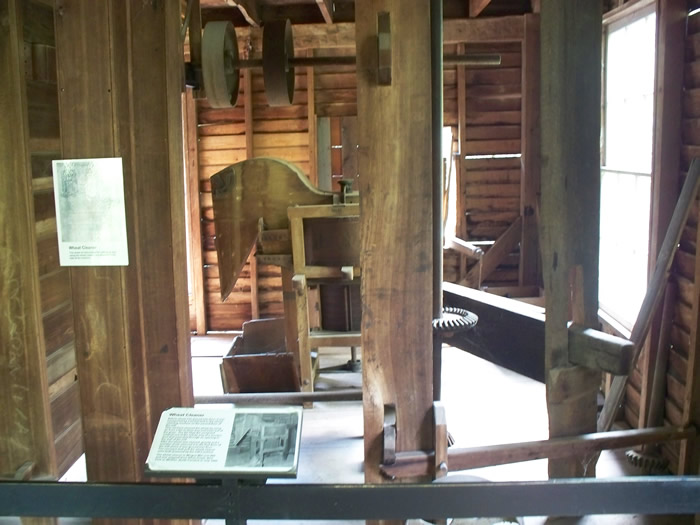
The apparatus in the distant center of phot is a wheat cleaner.
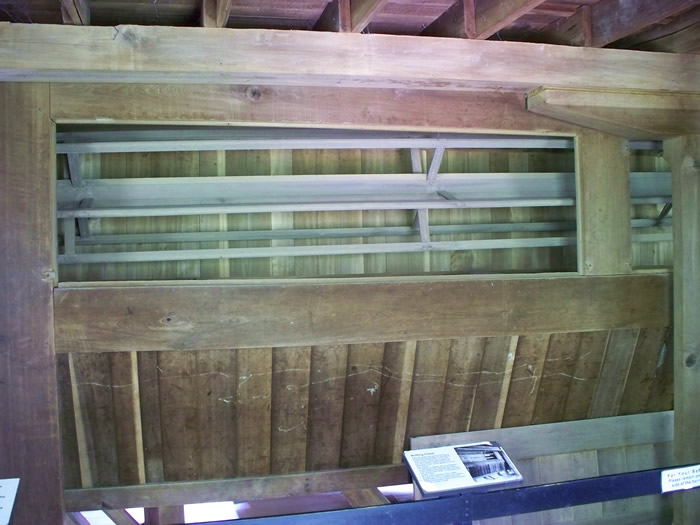
This very large especially constructed machine is a bolting chest, used primarily to remove much of the middlings to produce a finer flour with a stone ground milling system.
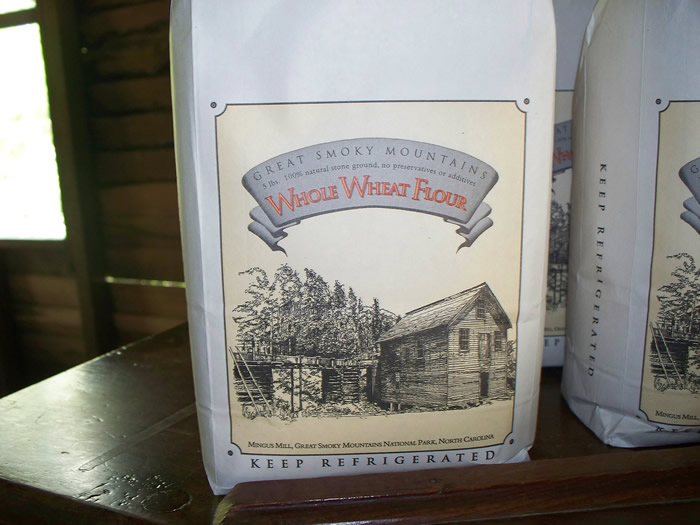
The processed sack of whole wheat flour is the actual end result of the milling process.
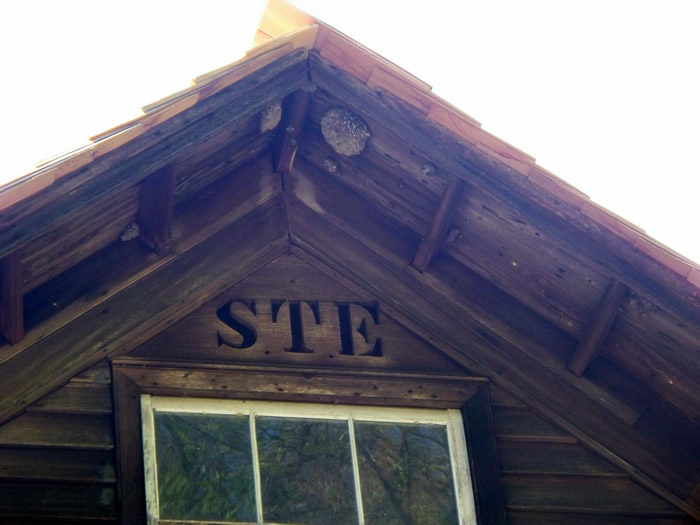
This current mill, built in 1886 and always powered by a turbine, replaced a 1790 grist mill powered by a wooden waterwheel and was built by Sion Early, who's initials are carved under the eaves of the front gable.
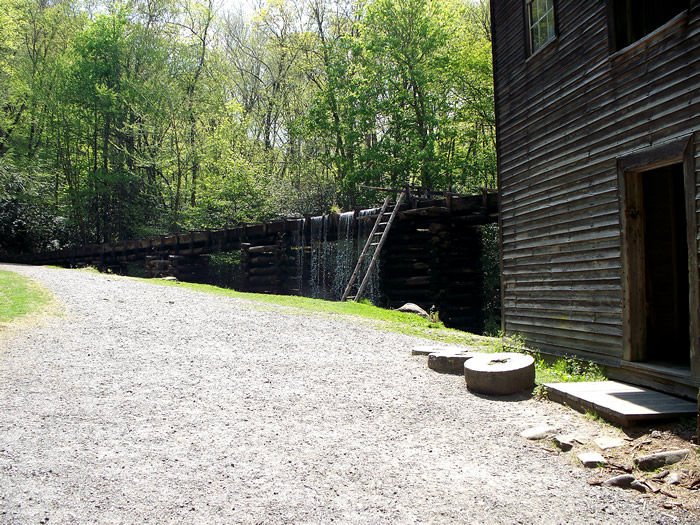
In the early 1900's it was still grinding corn and wheat for families in the surrounding area. The mill continued to operate until c. 1930 when the land around the mill, along with the mill, was bought for the inclusion in the newly created Great Smokey Mountains National Park. In 1937 the mill was restored by the Park. The labor was provided by the Civilian Conservation Corps, a depression-era public works program. The mill was again rehabilitated by the National Park Service in 1968. GPS: 35' 31.22N, 83' 18.60W in Degrees and Decimal Minutes 2,208' elevation